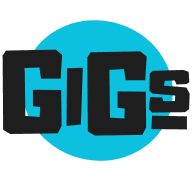4 Most Effective Methods for Presenting Design Concepts to Clients
Discover the most effective methods for presenting design concepts to clients, distilled from the wisdom of seasoned industry experts. This article demystifies the process, offering practical advice on everything from selecting your top concepts to showcasing them with high-quality mockups. Gain the confidence to convey your creative vision clearly and compellingly, with expert-backed strategies that can set your presentations apart.
- Narrow Down to Three Concepts
- Use Bloom and Outlign Platforms
- Present Concepts with High-Quality Mockups
- Show a Clear Visual Story
Narrow Down to Three Concepts
Hi there! For us, and personally for myself, I find that it is great to narrow down on a few concepts to present, not too many as too many options become a nightmare. Best rule, keep it simple. After the briefing process is done get three final comps to present to the client. Depending on the relationship some clients prefer something formal like a presentation to walk them through the comps, or others who have less time prefer a simple email or callout in a project management platform to review them. Tailoring the presentation to meet the clients needs works best, but a common element we like to champion is stick to 3 creative concepts for them to review, they can pick which they like best, or incorporate design elements from one into another in their review process. However the golden rule: No one client is the same. Learn how they prefer to ingest concepts first, and tailor your presentation approach to their needs. You can't go wrong this way. If a process requirement is too cumbersome for your team, do not be afraid to highlight that in the discovery process. Ryan Anderson President, Markiserv www.markiserv.com

Use Bloom and Outlign Platforms
At Unlmtd Agency, we believe in making the design process as smooth and enjoyable as possible for our clients. That's why we combine live online (or in-person, when we can!) presentations with a centralized, branded client dashboard using platforms like Bloom and Outlign.
With Bloom, we give clients their very own custom dashboard-think of it as a one-stop shop for everything related to their project. From accessing project timelines to booking meetings or revisiting deliverables, it's all in one sleek, easy-to-use space. Plus, it's all wrapped up in our branding because professionalism matters, and first impressions last.
Then there's Outlign, the superstar for collaboration. Outlign takes teamwork to the next level with features like:
Effortless Feedback: Clients can comment directly on design concepts-no confusing email chains or "wait, which version are we talking about?" moments.
File Heaven: Need to download a file or reference a past project? It's all neatly organized and easy to find. No more hunting through inboxes or scrolling endlessly.
Why does this work so well?
Professional Vibes: Both platforms keep things looking polished and put-together, which reflects well on us (and keeps our clients feeling confident in their choice).
Simple Collaboration: Outlign makes sharing ideas and refining designs a breeze, keeping everyone on the same page.
Total Convenience: Everything is at the client's fingertips-no searching, no stress, just smooth sailing.
This dynamic duo not only makes the design process seamless but also leaves our clients feeling cared for, engaged, and excited to work with us again. Who said business couldn't be fun and efficient?

Present Concepts with High-Quality Mockups
As a brand designer I have a few different ways to present concepts, depending on the project. I always use high-quality mockups to show the brand in real-life scenarios and then present them in a presentation in Notion so I can also gather feedback in one place. This allows the client to see how the brand will look in use and they can provide me with their thoughts without having to email back and forth.

Show a Clear Visual Story
My preferred method for presenting design concepts to clients is by showing them a clear, visual story. I like to start with a simple mood board or a few sketches that outline the direction before diving into the final designs. This helps set expectations and get early feedback.
For example, I recently worked with a client on a logo redesign. I presented three concepts, each with a different feel, and explained the thought process behind each design. This way, the client could see how the designs align with their brand values. I found this approach to be effective because it encourages collaboration, allows for early input, and ensures the final design feels like a true reflection of the client's vision.


